Pattison, Harry Manning
Killed in Flying Accident 1943-07-18
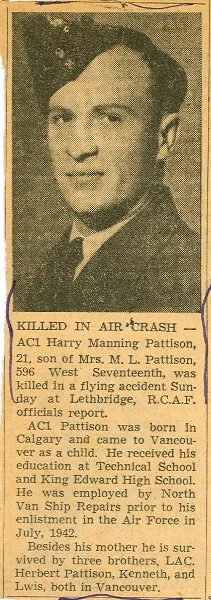

Birth Date: 1921-October-17
Born:
Son of Marjorie L. Pattison, of Vancouver.
Home: Vancouver, British Columbia
Enlistment:
Enlistment Date: Unknown
Service
RCAF
Unit
8 BGS- Bombing & Gunnery School
Base
Lethbridge, Alberta, Canada
Rank
Aircraftman 1st Class
Position
Aircraftman 1st Class
Service Numbers
R/172494
First Burial
 Forest Lawn Memorial Park, Burnaby, British Columbia
Forest Lawn Memorial Park, Burnaby, British Columbia
This incident involved multiple aircraft:
- Bolingbroke Mk. IVT Serial: 9906
All the above aircraft in the above list are referenced in this report.
Bolingbroke 9906
Bristol Bolingbroke
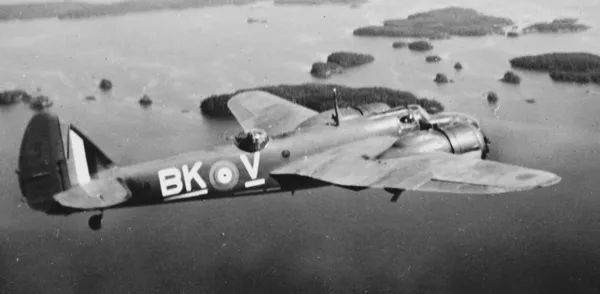
Fairchild Bolingbroke Mk. IV, RCAF (Serial No. 9118), coded BK-V, No. 115 (Bomber Reconnaissance) Squadron, Patricia Bay, British Columbia, 1942.
The Bristol Fairchild Bolingbroke was a maritime patrol aircraft and trainer used by the Royal Canadian Air Force during the Second World War. Built by Fairchild-Canada, it was a license-built version of the Bristol Blenheim Mk IV bomber.
In 1935, the British Air Ministry issued Specification G.24/35 to procure a coastal reconnaissance/light bomber to replace the Avro Anson. Bristol proposed the Type 149, based on its Blenheim Mk I, with Bristol Aquila engines to give greater range. While the Air Ministry rejected this proposal, a Blenheim Mk I, retaining its Mercury VIII engines, was converted as a Type 149 (Blenheim Mk III) for the general reconnaissance role.The nose was lengthened to provide more room for the bombardier, with the upper left surface of the nose being scooped out to maintain pilot visibility during takeoff and landing.
The longer range also fulfilled a Canadian requirement for a maritime patrol aircraft. Consequently, Fairchild Aircraft Ltd. (Canada) of Quebec started production of the Blenheim Mk IV as the Bolingbroke (the originally intended name for the Blenheim IV). This type was nicknamed the "Bolly". After a small run of aircraft constructed to British specifications, as the Bolingbroke Mk I, Fairchild switched production to the Bolingbroke Mk IV with Canadian and American instruments and equipment. These versions also included anti-icing boots and a dinghy. One of the early Mk IV variants was the Bolingbroke Mk IVW which was powered by two 825 hp (615 kW) Pratt & Whitney SB4G Twin Wasp Junior engines. Incapable of maintaining altitude on one engine, the normal bomb load was reduced to 500 pounds on these aircraft to compensate for the low engine power. The most-produced variant was the Bolingbroke Mk IVT trainer, of which 457 were completed. A total of 626 Bolingbrokes were produced.Wikipedia
 Bolingbroke - Kestrel Publications
Bolingbroke - Kestrel Publications
8 BGS (8 Bomb and Gunnery School)
The Bombing and Gunnery School (B&GS) offered instruction in the techniques of bomb aiming and aerial machine gunnery to Air Observers, Bomb Aimers, and Wireless Air Gunners. These schools required large areas to accommodate their bombing and gunnery ranges, and were often located near water. The Avro Anson, Fairey Battle, Bristol Bolingbroke, and Westland Lysander were the standard aircraft used at B&GS schools.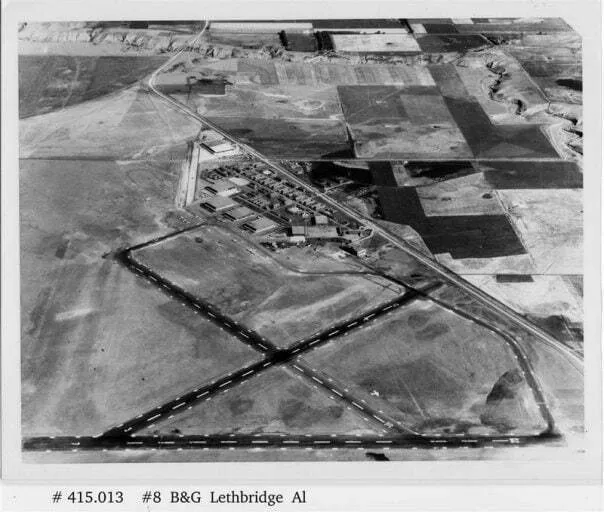
Established in 1940 at the present site of Lethbridge Airport CYQL.
More information on the RCAF Station at Lethbridge AB can be found at

 Bomber Command Museum Of Canada
Bomber Command Museum Of Canada
 Vintage Wings - Ghosts Of Alberta
Vintage Wings - Ghosts Of Alberta
Bolingbroke 9906
Bolingbroke Mk. IVT 9906
Transferred to No. 4 TC on 13 Jul 1942 and assigned to 8 B&GS in Lethbridge, AB. On 18 Jul 1943, a Cat "A" crash resulted when control lost (believed after engine cut out), and the a/c spun into ground and was destroyed by fire. The crew, Flying Officer J. Heacock, Cpl W. Newell, Leading Aircraftman C. Wise, and AC1 H. Pattison, were all killed.1942-06-23 Taken on Strength 2021-12-31
1943-06-14 Struck off Strength Cat “A†write-off; reduced to spares and produce 2021-12-31
1943-July-18 Accident: 8 Bomb & Gunnery School Loc: Aerodrome Names: Heacock | Newell | Pattison | Wise
 Canadian Virtual War Memorial
Canadian Virtual War Memorial Commonwealth War Graves Commission
Commonwealth War Graves Commission www.findagrave.com
www.findagrave.com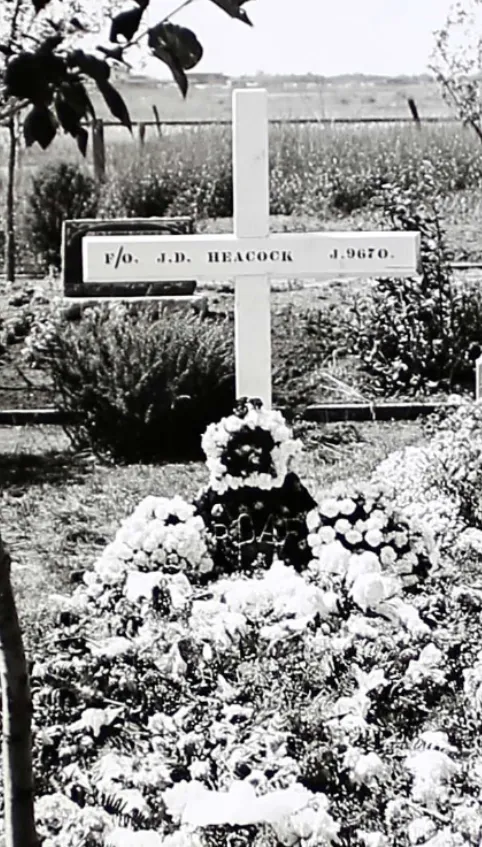
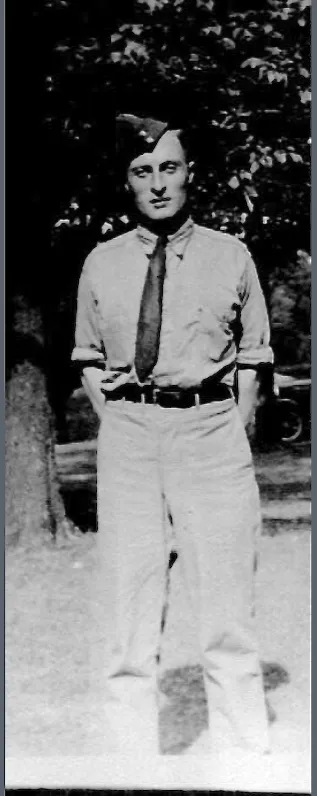
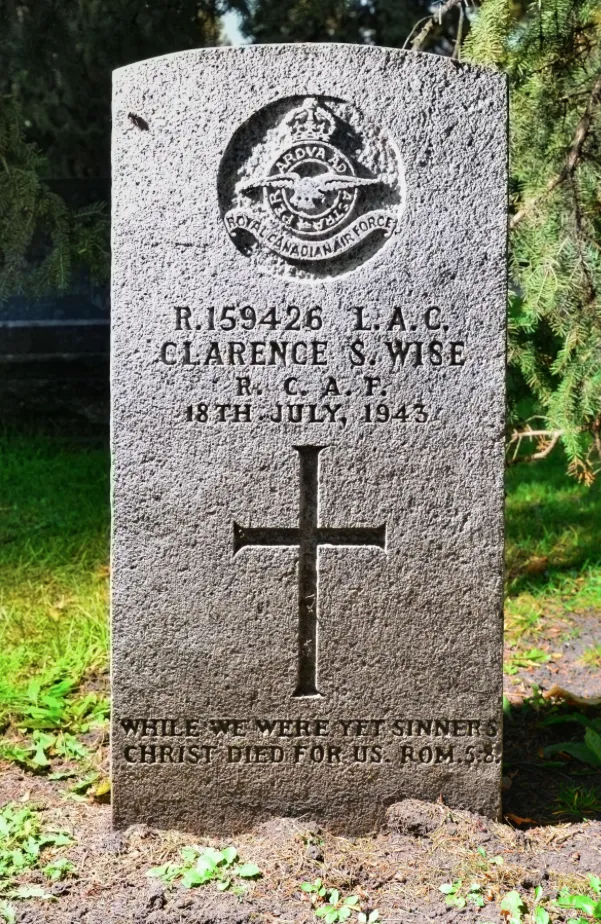
 Wikipedia Bolingbroke Bomber
Wikipedia Bolingbroke Bomber Harold A Skaarup Web Page
Harold A Skaarup Web Page Bolingbroke Bomber WWII
Bolingbroke Bomber WWII